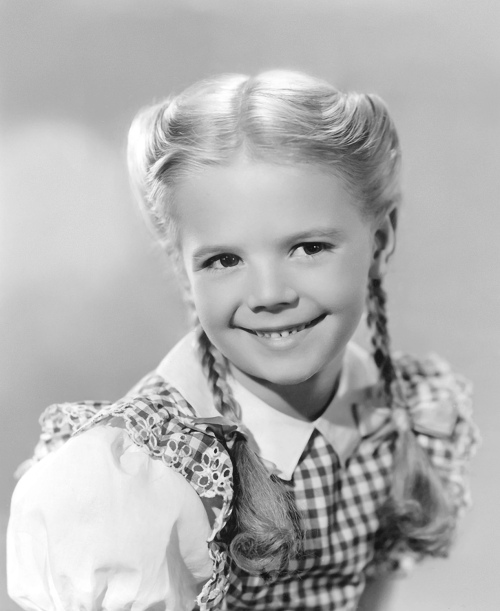“Ever since I was knee high,” Natalie Wood would say later, “I was waiting for my break.”
Natalie’s mother – whom she called “Mud” – had convinced Natalie that the only thing that mattered in life was to be a great actress. Mud had moved her family to Hollywood for the sole purpose of getting Natalie (1938-1981) into pictures. By the time Natalie was six, though, she had been paraded by Mud in front of scores of casting directors who paid her no mind.
In February 1945, Mud managed to get Natalie a screen test for “Tomorrow is Forever,” a picture directed by Irving Pichel. Natalie was one of six pretty little girls to audition for the role of a traumatized German war orphan named Margaret. In the film, Margaret has several heartrending scenes, one of which was chosen for the screen test. The scene called for Margaret to cry.
“She [Natalie] played the scene and it was not very good,” recalled Pichel. Natalie had not been able to cry. She didn’t get the part.
Mud became frantic that Natalie didn’t get the part. “My mother got mad and said, ‘What do you mean, you didn’t cry?'” recalled Natalie. That night at home, Mud commanded Natalie to phone Pichel and beg for a second chance. Pichel was moved by Natalie’s call and agreed to another screen test.
Mud then set her mind to preparing Natalie to cry on cue. She enlisted the aid of Natalie’s older sister, Olga, as coach. Olga remembered her drama teacher instructing the class to think of something sad when they needed to cry. Olga told Natalie to remember the day their dog was hit by a truck. Horrorstruck, Natalie relived the nightmare of her puppy being crushed to death.
“I got her to cry,” recalls Olga.
Olga’s technique was not lost on Mud.
Both Mud and Olga were at the studio for Natalie’s second screen test. Before the camera rolled, Olga whispered to Natalie to think about their little dog dying, coaxing Natalie to cry. Then, even worse, her mother pulled the sobbing Natalie to the side where no one could see, and,
‘took a live butterfly out of a jar and tore the wings off it.'” (1)
Natalie became hysterical at her mother’s sadistic act, which only she had witnessed. Mud then grabbed Natalie by the hand, shouting at the crew, “She’s ready,” and propelled the screaming Natalie in front of the cameras. The cameras rolled.
Pichel, unaware of Olga and Mud’s behind-the-scenes brutality, recalled that Natalie’s tears that day “seemed to come from the depth of some divine despair.”
Natalie got the part, which allowed her to act alongside such Hollywood greats as Orson Welles and Claudette Colbert.
In a short time, Mud’s determination and Natalie’s talent achieved Mud’s desired result: Natalie Wood became a star. At the age of seven, she was supporting her family.
In 1947, she rocketed to superstardom as Susan Walker in the Christmas classic, “Miracle on 34th Street.” A few months after the film’s release, Natalie Wood was so popular that Macy’s invited her to appear in the store’s annual Thanksgiving Day parade. She would star in 20 films as a child.
(1) Finstad, Suzanne. Natasha: The Biography of Natalie Wood. New York: Three Rivers Press, 2001. This story was recounted by Natalie Wood to actor Robert Redford twenty years later.

American actors Robert Redford and Natalie Wood, ca. 1965-66. They starred in two films together, Inside Daisy Clover and This Property is Condemned.
Readers, for more on Natalie Wood on Lisa’s History Room, click here.





















